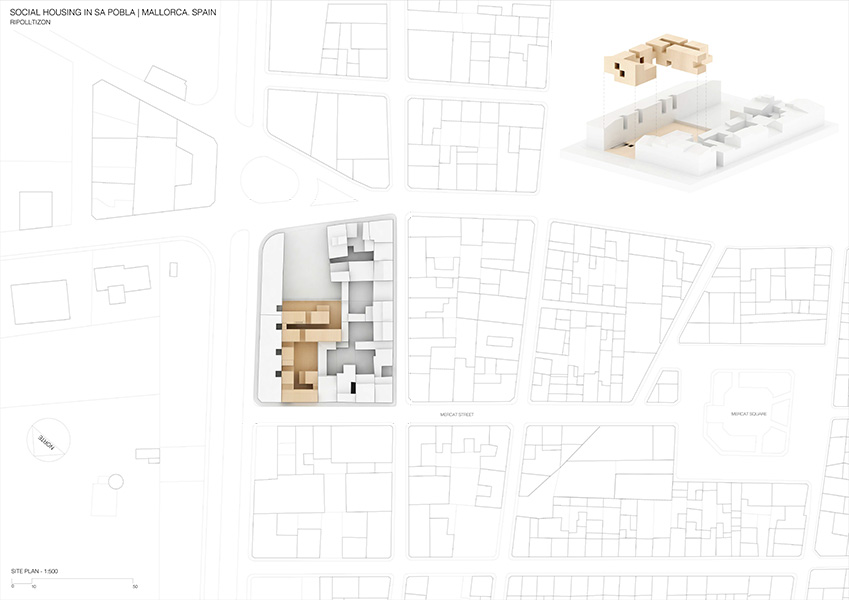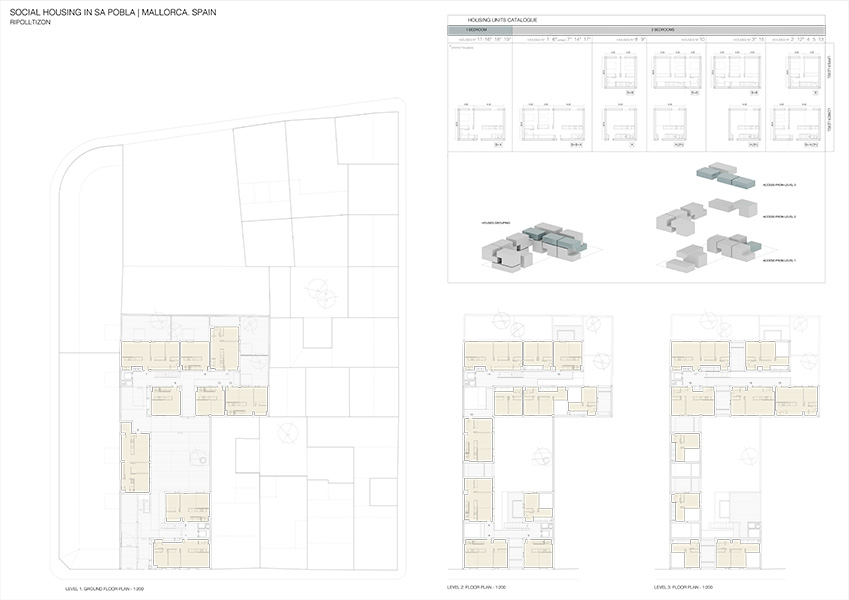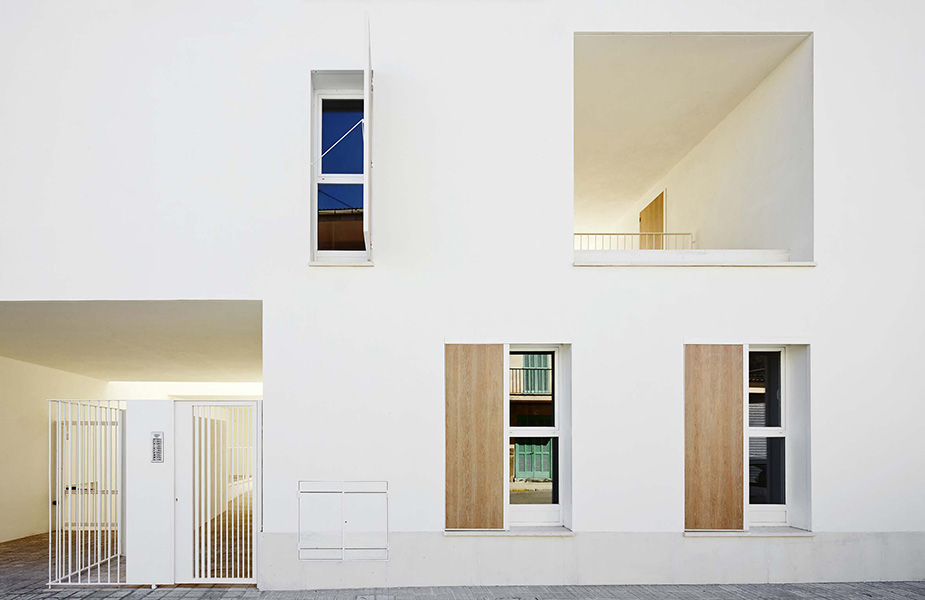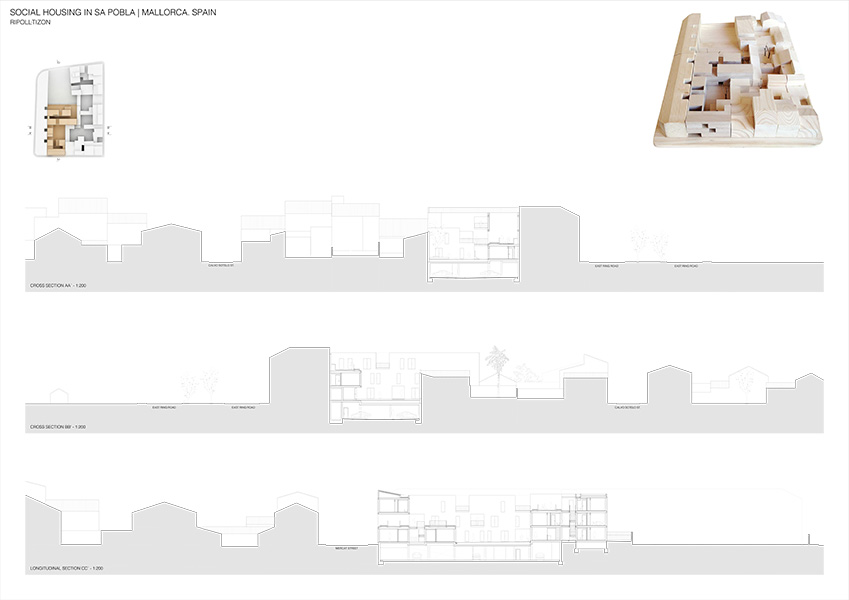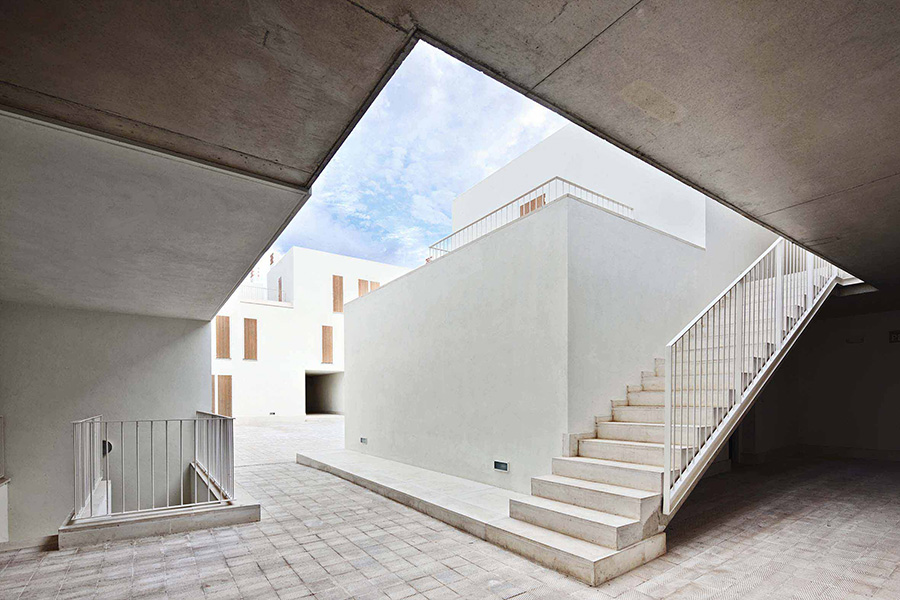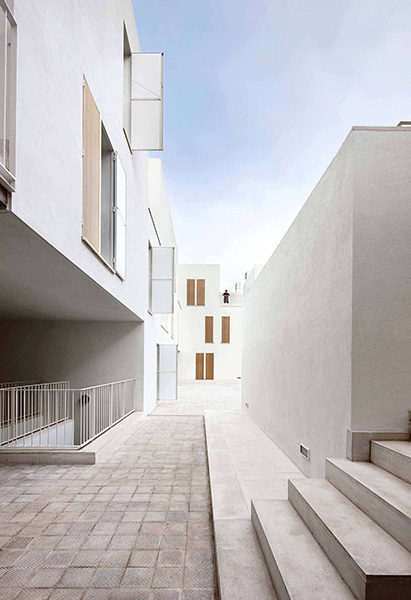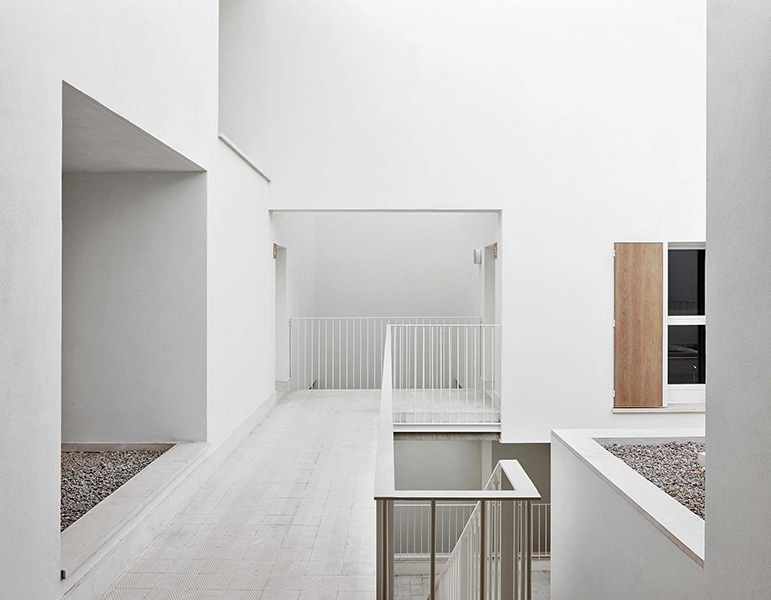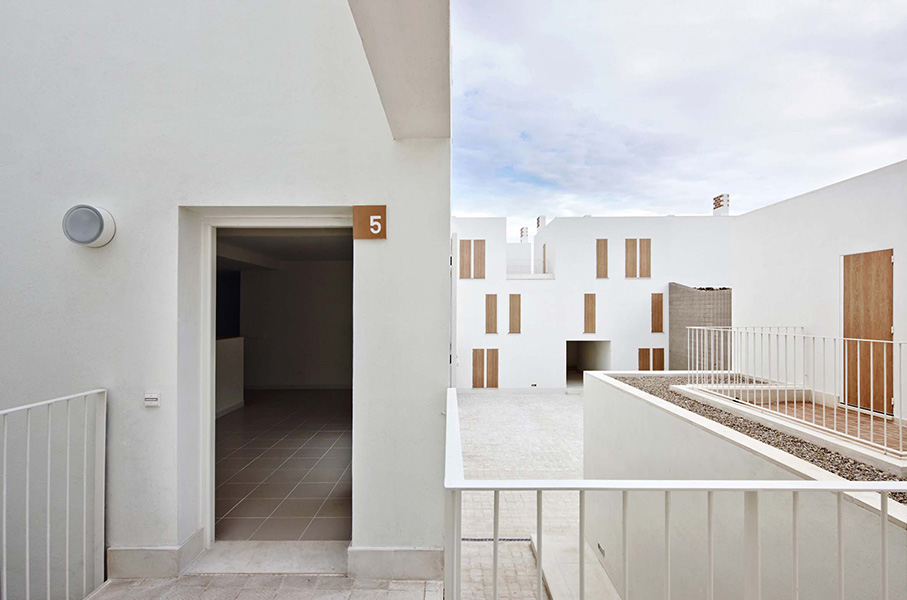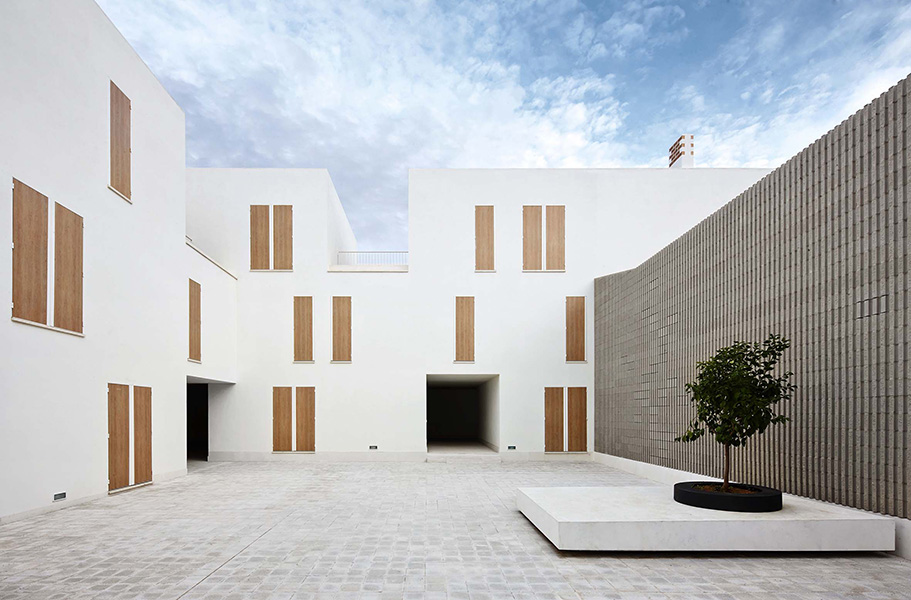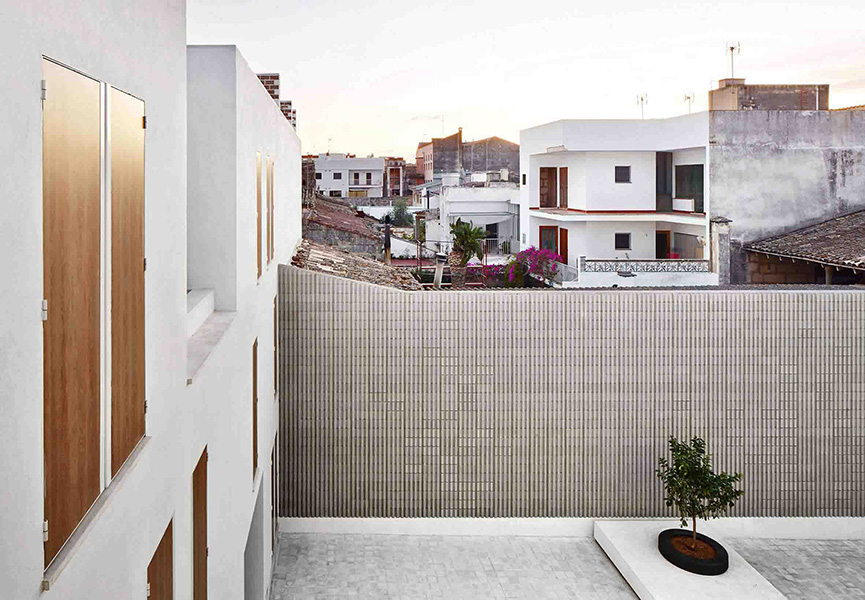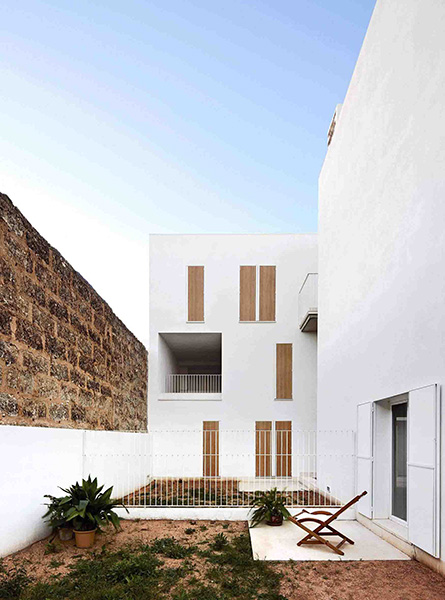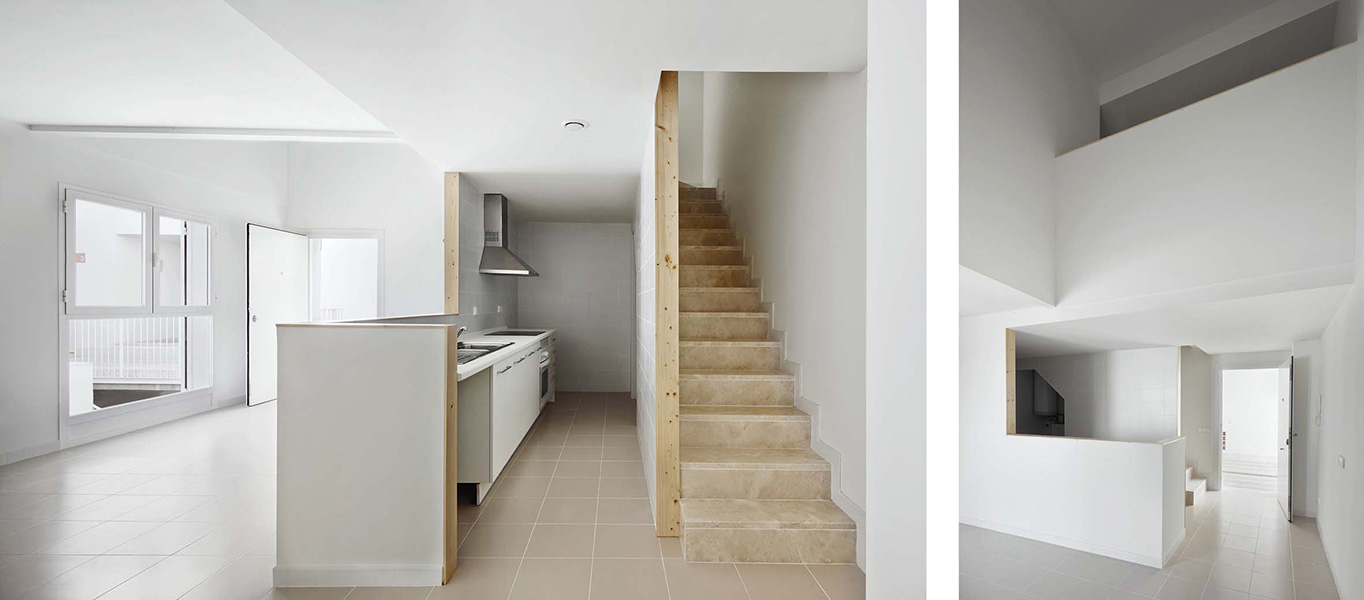NAME
Designer or design team: Jose Ripoll Vaquer and Juan Miguel Tizon Garau (Project leaders)
The project has been submitted by: Juan Miguel Tizon Garau
Plot area: 1.145 mq
Gross Area: 2.498 mq
Of which
Residential: 60 %
Public/communal areas: 15%
Facilities for the public: 25%
Business/trade: 0
Offices: 0
Number of residential units: 19
Typology of users: temporary residents
Total building costs: 1.576.224,00 €
Building Cost = Total Building Cost / Gross Area: 631 €/mq
Floor area ratio = Gross Area / Plot Area: 2,18
Work started on date: Wednesday, 16th June 2010
Work completion date: Tuesday, 11th September 2012
OWNERSHIP
Institut Balear de L’HabitatgeE (IBAVI)
Promoter: Institut Balear de L’HabitatgeE (IBAVI)
Allotment rule: Rental for low income families RENTAL FOR LOW INCOME FAMILIES
Reduction cost percentage compared to the market value:
rent: 40%
LOCATION
Country: Spain
City/town: Sa Pobla (Mallorca)
Address: Calle Mercat 92

